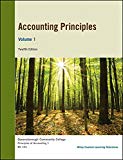
(a)
(1)
Accounting for Receivables:
Receivables are defined as the amounts that are due to a firm by its customers and other parties. Receivables include all those assets that arise due to the primary operations of a firm and those representing cash that is to be collected from all external parties who owe money to the firm.
Receivables are broadly categorized into trade-receivables and non-trade receivables. Trade receivables refer to those receivables that occur due to the sale of goods and services in the normal course of business. Non-trade receivables refer to the amounts that occur due to third parties from transactions outside the primary course of business.
To determine: The
(2)
The average collection period for receivables for A Company and W Company.
(c)
The conclusions about managing accounts receivable that can be drawn from these data.
Want to see the full answer?
Check out a sample textbook solution
Chapter 9 Solutions
Accounting Principles 12th Edition
- I am trying to find the accurate solution to this financial accounting problem with appropriate explanations.arrow_forwardA firm has net working capital of $1,450, net fixed assets of $5,220, sales of $12,750, and current liabilities of $1,880. How many dollars worth of sales are generated from every $1 in total assets? a. $2.92 b. $1.49 c. $2.36 d. $1.50 e. $1.37arrow_forwardCan you explain the correct approach to solve this general accounting question?arrow_forward

 AccountingAccountingISBN:9781337272094Author:WARREN, Carl S., Reeve, James M., Duchac, Jonathan E.Publisher:Cengage Learning,
AccountingAccountingISBN:9781337272094Author:WARREN, Carl S., Reeve, James M., Duchac, Jonathan E.Publisher:Cengage Learning, Accounting Information SystemsAccountingISBN:9781337619202Author:Hall, James A.Publisher:Cengage Learning,
Accounting Information SystemsAccountingISBN:9781337619202Author:Hall, James A.Publisher:Cengage Learning, Horngren's Cost Accounting: A Managerial Emphasis...AccountingISBN:9780134475585Author:Srikant M. Datar, Madhav V. RajanPublisher:PEARSON
Horngren's Cost Accounting: A Managerial Emphasis...AccountingISBN:9780134475585Author:Srikant M. Datar, Madhav V. RajanPublisher:PEARSON Intermediate AccountingAccountingISBN:9781259722660Author:J. David Spiceland, Mark W. Nelson, Wayne M ThomasPublisher:McGraw-Hill Education
Intermediate AccountingAccountingISBN:9781259722660Author:J. David Spiceland, Mark W. Nelson, Wayne M ThomasPublisher:McGraw-Hill Education Financial and Managerial AccountingAccountingISBN:9781259726705Author:John J Wild, Ken W. Shaw, Barbara Chiappetta Fundamental Accounting PrinciplesPublisher:McGraw-Hill Education
Financial and Managerial AccountingAccountingISBN:9781259726705Author:John J Wild, Ken W. Shaw, Barbara Chiappetta Fundamental Accounting PrinciplesPublisher:McGraw-Hill Education





